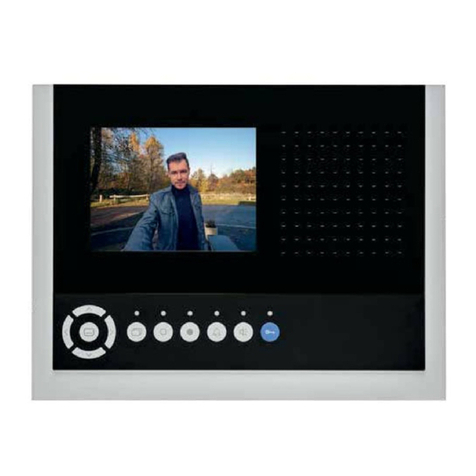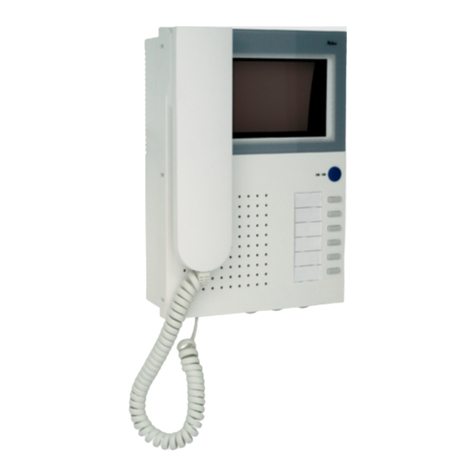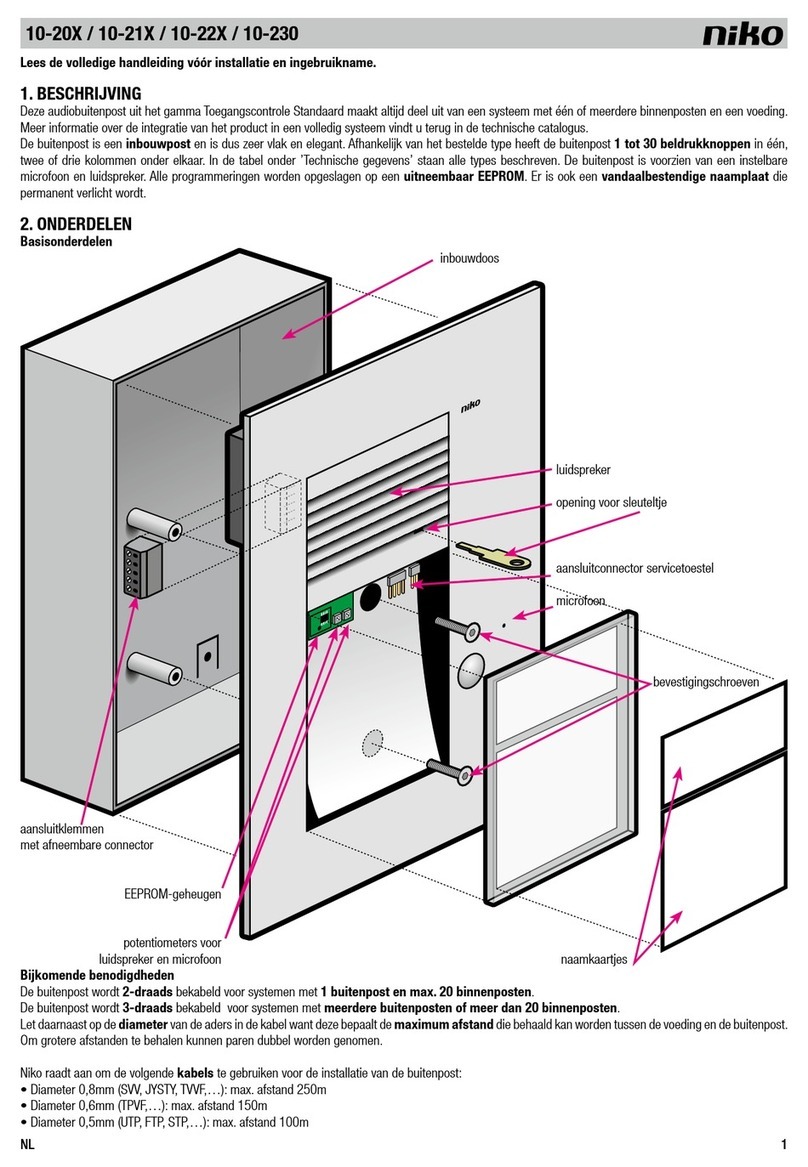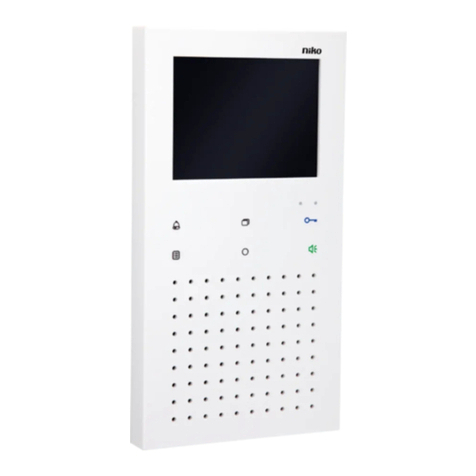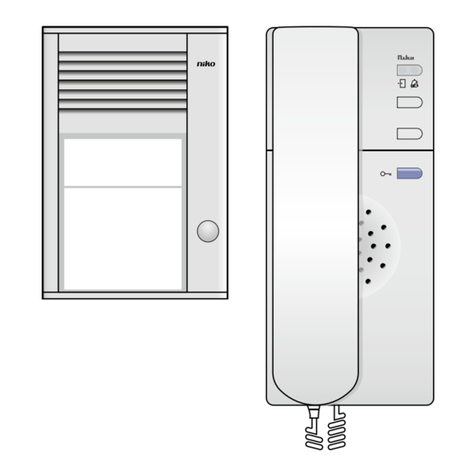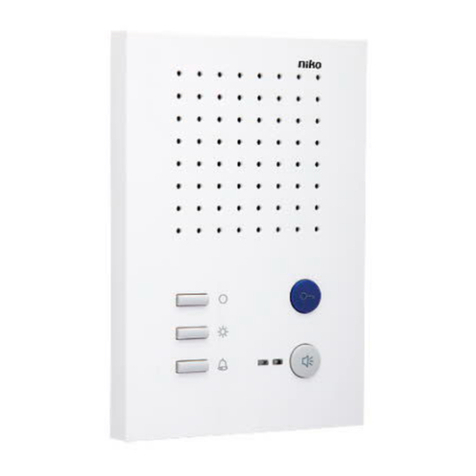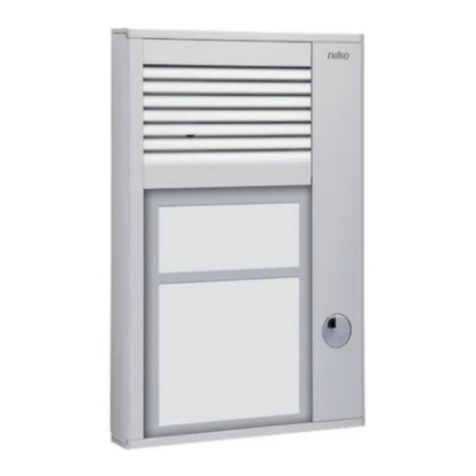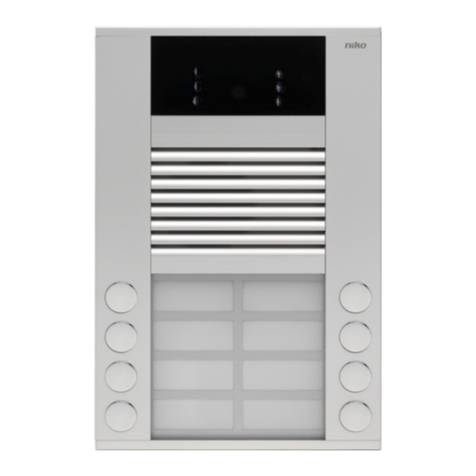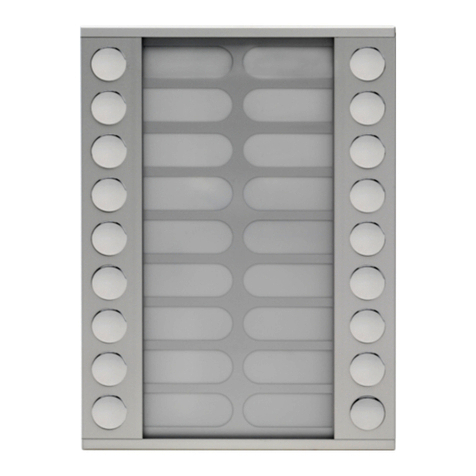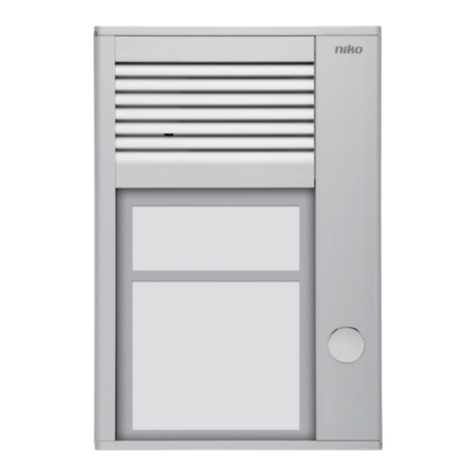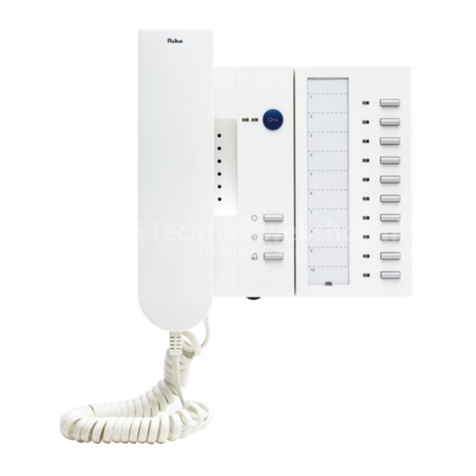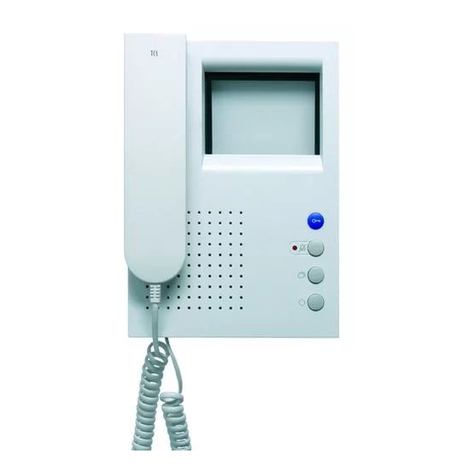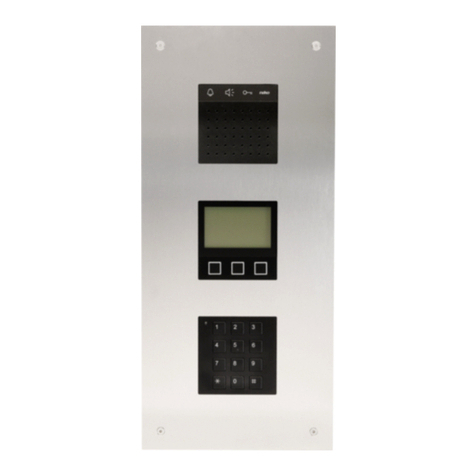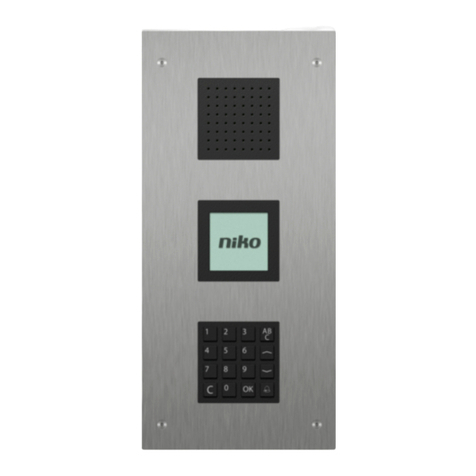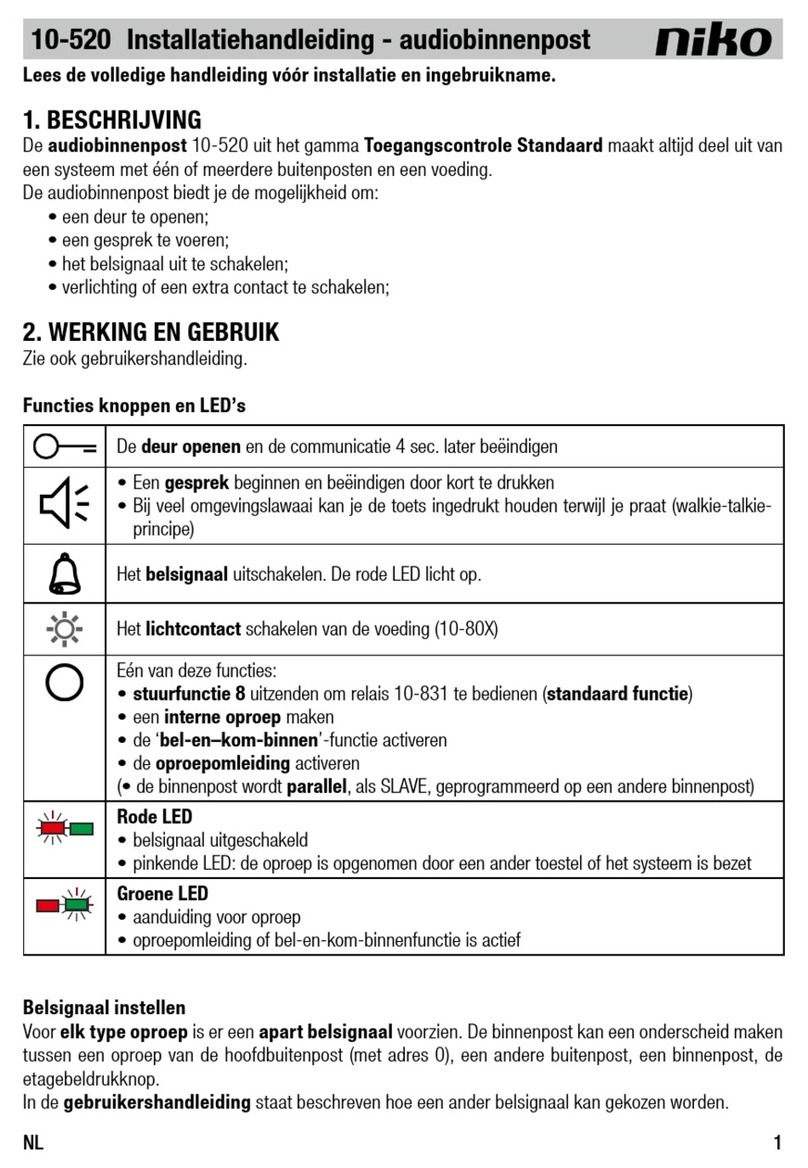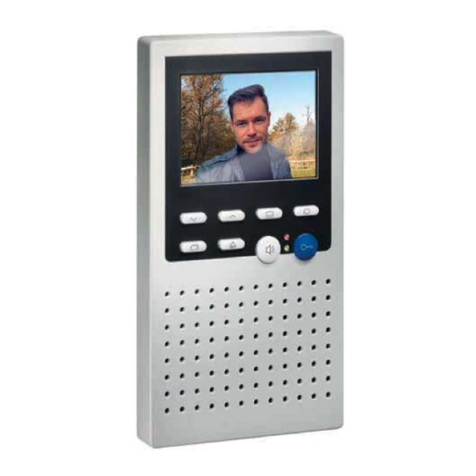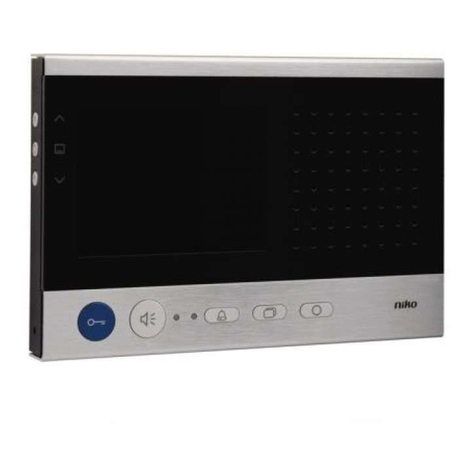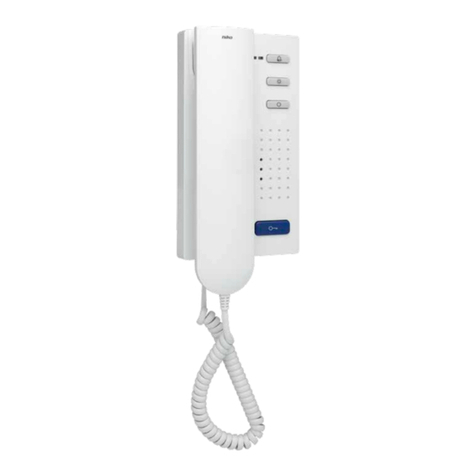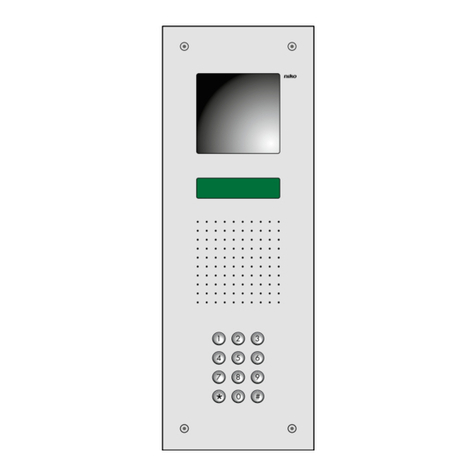
10-525
5
2. Is het toestelprobleem niet verholpen, doorloop dan onderstaande lijst van mogelijke problemen:
Probleem Oorzaak Oplossing
Je hoort een negatieve toon (hoog – laag) als
je op een beldrukknop drukt.1
Er zit een fout in de programmering. Wis de programmering en herbegin.
De installatie bevindt zich nog in
programmeermode.
Verlaat de programmeermode.
De binnenpost is niet correct aangesloten. Controleer de bedrading volgens het
aansluitschema.
Er is een oproep, maar je hoort geen
belsignaal en de rode indicatieled brandt.
Het belsignaal is uitgeschakeld. Druk op om het belsignaal opnieuw in
te schakelen. De rode indicatieled brandt
niet meer.
Je hoort een fluittoon tijdens een gesprek. De buitenpost is niet goed afgesteld. Wijzig de geluidssterkte van de microfoon en
de luidspreker via de potentiometers op de
buitenpost tot de fluittoon verdwijnt.
Beide indicatieleds knipperen continu.1De a- en P-ader zijn verwisseld of kortge-
sloten.
Je hoort de volgende fouttoon:
Wissel de a- en P-ader om of los de
kortsluiting op.
Het toestel keert terug in rustmode.
De a-ader is niet aangesloten of krijgt geen
stroom.
Je hoort de volgende fouttoon:
Sluit de a-ader aan en controleer de voeding.
Het toestel keert terug in rustmode.
Er is een toets geblokkeerd (langer dan 15
seconden ingedrukt).
Je hoort de volgende fouttoon:
Maak de toets op het toestel of de
etagebeldrukknop los.
Het toestel keert terug in rustmode.
1 Neem contact op met een erkend installateur om het probleem te verhelpen.
7. ONDERHOUD
Vuil kan de werking van de binnenpost beïnvloeden. Houd daarom het toestel altijd schoon en droog. Gebruik een vochtige doek en water met
zeep om het toestel te reinigen.
Om te vermijden dat het oppervlak van het toestel beschadigd wordt, mogen geen schurende sponzen of reinigingsmiddelen, reinigingsmiddelen
op basis van een oplosmiddel, een zuur of azijnzuur of een hogedrukreiniger worden gebruikt.
Als er onderdelen van de binnenpost defect zijn, neem je contact op met een erkend installateur.
8. TECHNISCHE GEGEVENS
afmetingen 180 x 100 x 23 mm (HxBxD)
gewicht 185 g
materiaal van de behuizing PC+ABS
kleur van de behuizing wit
voedingsspanning + 24 Vdc ± 8%
maximale ingangsstroom I(Pmax) = 75 mA
ingangsstroom in rustmode - tweedraads: I(a) = 1 mA
- driedraads: I(a) = 0,2 mA – I(P) = 0,8 mA
beschermingsgraad IP30
omgevingstemperatuur -5 – +40°C
